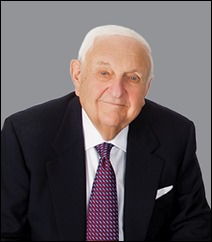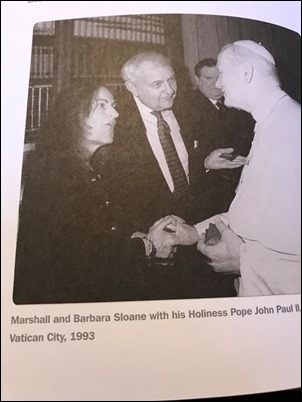Hello and welcome,
Yesterday, the four diocesan bishops of Massachusetts issued a joint statement on the proposal to expand abortion in the Commonwealth. The statement is part of our efforts to raise awareness of the extreme aspects of this attempt to enshrine late-term abortion and other radical provisions into state law.
I invite you to read our statement and share it with others:
The Massachusetts State Legislature will consider passing into law two deeply troubling bills this legislative session. They are identical in text but differ slightly in their titles. The first, (HB 3320) is “An Act removing obstacles and expanding access to women’s reproductive health”. The second, (SB 1209) is “An Act to remove obstacles and expand abortion access”. Combined they share the same acronym – ROE.
The supporters of these bills argue the proposed changes to Massachusetts law are simply intended to protect a woman’s right to an abortion in the event the United States Supreme Court overturns the 1973 decision in the case of Roe v. Wade. However, in reality these bills would create a significant expansion of current Massachusetts state law. More specifically, ROE would:
1) Allow abortions during the nine months of pregnancy for virtually any reason.
2) Eliminate any requirements that abortions be performed in a hospital.
3) Eliminate the requirement that provides medical care to a child who survives an abortion attempt.
4) Eliminate the requirement that a minor under the age of 18 have the consent of a parent, guardian, or the courts.
5) Provide state funding for women who cannot afford the procedure.
In order to understand the serious moral questions raised concerning the protection of human life, the specific wording of the bills must be examined closely. For example, that examination is particularly significant while considering the language that would allow for an abortion in the third trimester of a pregnancy. The two bills state in part:
“A physician, acting within their lawful scope of practice, may perform an abortion when, according to the physician’s best medical judgment based on the facts of the patient’s case, the patient is beyond twenty- four weeks from the commencement of pregnancy and the abortion is necessary to protect the patient’s life or physical or mental health, or in cases of lethal fetal anomalies, or where the fetus is incompatible with sustained life outside the uterus. Medical judgement may be exercised in the light of all factors – physical, emotional, psychological, familial, and the person’s age – relevant to the well-being of the patient.”
In just these two sentences, the bills would make extreme changes to Massachusetts law. In addition to aborting infants with fetal anomalies or where the fetus is incompatible with sustained life outside of the uterus, it allows physicians to perform abortions up until birth for a myriad of undefined reasons (ie: physical, emotional, psychological, familial, age) to protect a woman’s life, physical health or mental health. The result would become abortion on demand for the full term of pregnancy.
The Catholic Church has always upheld the dignity of human life and spoken out against abortion at all stages of pregnancy. As Bishops we are encouraged by the most recent statistics which clearly indicate that the rate of abortions in both this state and across the country has significantly decreased over the past 40 years. In fact, the rates today are 50% lower than the rates in 1980. However, at a time when the overall number of abortions have decreased, society cannot now accept such an egregious attack on human life as these bills would provide.
Therefore, we, the Roman Catholic Bishops of the four Dioceses of Massachusetts, call on our elected officials to carefully consider the consequences that these bills would bring to the lives of infants, parents, families and the citizens of the Commonwealth. We urge all people of good will, regardless of what faith they practice, to vigorously oppose these extreme measures.
His Eminence Seán P. O’Malley, OFM, Cap., Archbishop of Boston
Most Reverend Robert J. McManus, Bishop of Worcester
Most Reverend Mitchell T. Rozanski, Bishop of Springfield
Most Reverent Edgar M. da Cunha, SDV, Bishop of Fall River
As regular readers will remember, I arrived in Rome late last week for meetings of the Pontifical Commission for the Protection of Minors and of the Council of Cardinals advising the Holy Father.
The commission met Friday, Saturday and Sunday, and there were other meetings with a number of different dicasteries, including the Congregation for the Doctrine of the Faith, the Congregation for Bishops and the Congregation for Religious.
We also met with Archbishop Scicluna to talk about the aftermath the February meeting of the heads of bishops conferences around the world. At that meeting, Archbishop Scicluna gave us a report on what has been done for the vademecum and other kinds of legislation.
One of our members, Prof. Benyam Mezmur, also met with the Secretary of State regarding the plans for the 30th anniversary of the U.N. Convention on the Rights of the Child. The Vatican was one of the first signers of that convention, which was ratified in November 1989.
We are also planning a meeting in Colombia this spring on safeguarding, which will include the members of CELAM and CLAR, which is the conference of religious in Latin America.
On Sunday, I was very happy to celebrate a Mass for the members of the Pontifical Commission at St. Peter’s Basilica.
The Mass was celebrated in the Irish Chapel, which is one of the underground chapels very close to the tomb of St. Peter. The mosaic you see behind the altar depicts St. Columban and the Irish monks, who were great missionaries.
On Sunday evening, we had a birthday dinner for Msgr. Bob Oliver. Joining us were Father Andrew Small, Msgr. Richard Gyhra and Archbishop Silvano Tomasi.
Archbishop Tomasi was the nuncio to Ethiopia and later the Permanent Observer of Holy See to the United Nations in Geneva. He is a Scalabrinian Father whom I knew many years ago in Washington D.C. when he worked at the Bishops Conference in the immigration department and was also the pastor of Holy Rosary Parish.
I also had an opportunity to have dinner with the seminarians and priests of Boston who are stationed in Rome. It is always very good to be able to see them and catch up.
Monday through Wednesday, we had our meetings of the Council of Cardinals.
The apostolic constitution for the governance of the Roman Curia we have been working on is now ready to be distributed among bishops and others for review and suggestions. We will work on reviewing the suggestions before presenting a new draft to the Holy Father by the end of this year.
I returned from Rome on Wednesday to be able to attend the Shiva, the time of mourning after death, for our very dear friend Marshall Sloane, which was held at his bank in Medford on Thursday.
Barry Sloane asked me to address the people there, and I was able to tender my condolences and speak a little bit about the extraordinary contribution that Marshall Sloane has made to the whole community.
He was a Papal Knight of St. Gregory and a man who was not just a great philanthropist but a person who always worked with such integrity, as a man of faith, for the common good of the community. He was a great supporter of Catholic Charities and our Catholic schools in the archdiocese.
He had a long and beautiful life that touched many people and it was very gratifying to see the throngs of people turning out to for the Shiva observance. I am very grateful to have been able to be a part of it.
Finally, we are busy planning for the dedication and reopening of the Cathedral of the Holy Cross. 
We look forward to the 11:30 Mass on Sunday, which will be a sort of unveiling of the renovations. As it turns out, this year Palm Sunday coincides with Patriots’ Day weekend so, the Mass will conclude with our annual blessing of the runners of the Boston Marathon.
The upper church of the Cathedral has been closed for nearly two years and we have been using the lower church and the blessed sacrament Chapel. The Cathedral is 150 years old, and this is the most extensive renovation it has ever undergone.
It was very important to be able to do it at this time, so that we would continue to have our Cathedral. The wiring and other basic systems of the Cathedral were in very bad repair and in dire need of replacement. At the same time, the renovation afforded us the opportunity to completely transform the interior of the Cathedral with a new sanctuary, new lighting, new flooring and refinished pews.













In our Catholic tradition, the cathedral has always been an important center of faith and culture — a place where the local church gathers for very significant events — and our cathedral has a very glorious history. We remain grateful to the immigrant population who, with great sacrifice, built this cathedral 150 years ago and now it is our responsibility to make sure that future generations will be able to have this beautiful temple available to be a part of their spiritual patrimony as Catholics.
Until next week,
Cardinal Seán
